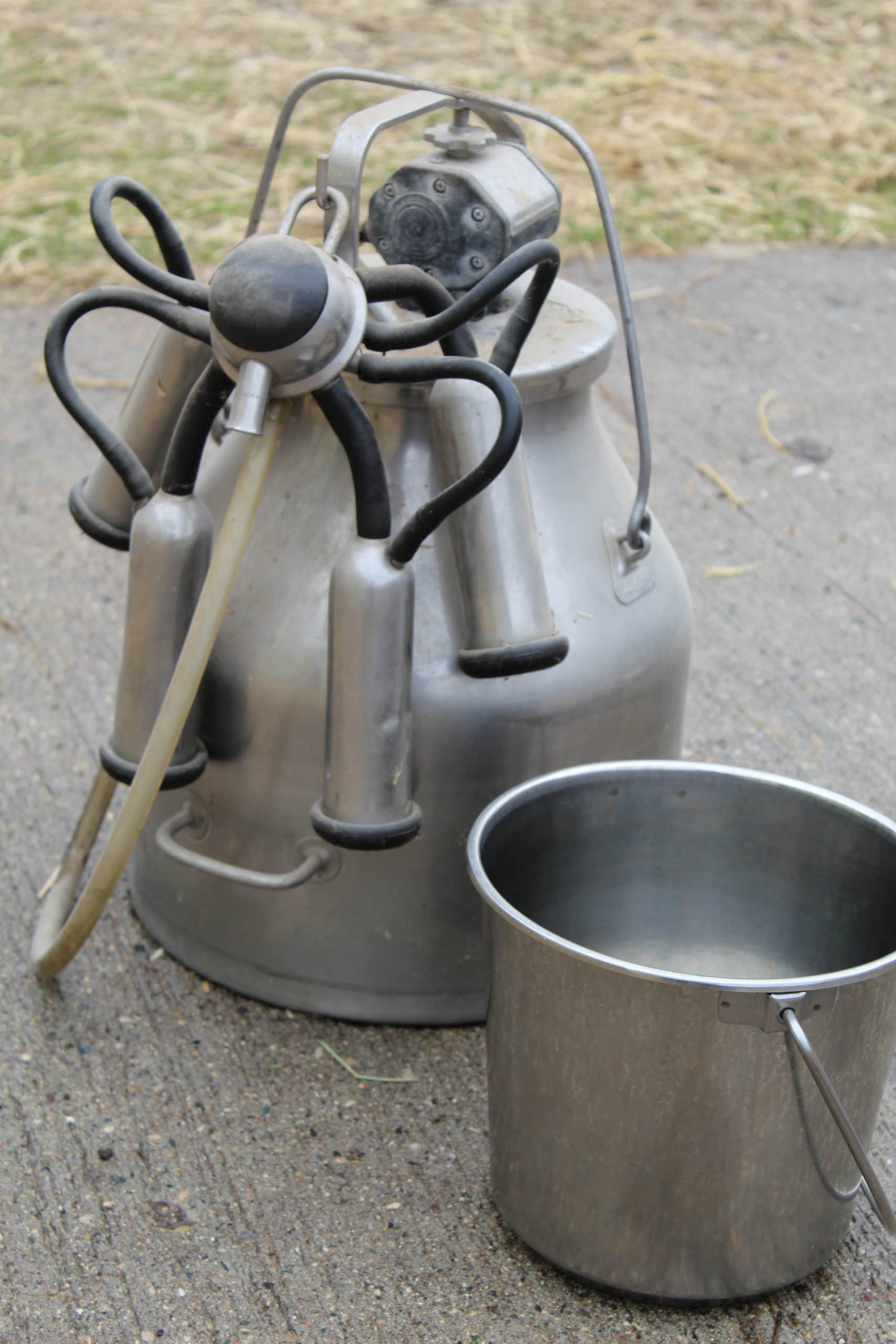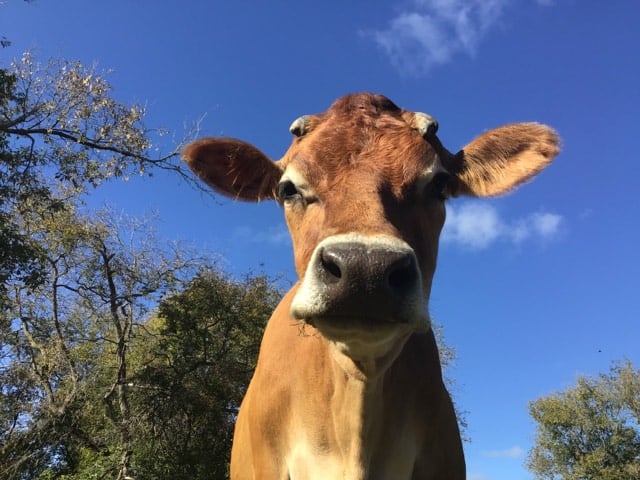All About Jersey Cows
Thinking about adding a milk cow to your farm or homestead? Here’s all about Jersey Cows. Pros, cons, and our story of how we ended up with two of them.
About Jersey Cows
Jerseys are named for and originated from the Island of Jersey, which is in the English Channel. It is believed they are one of the oldest dairy breeds with over 600 years of recorded history.
They are a truly beautiful cow with large, doe-like brown eyes. They can vary from light to dark brown. Some have lighter colored faces, others have dark faces and legs.
Jersey cows are a popular choice on homesteads for a few reasons:
- Size. Most Jersey cows are smaller in size than other dairy breeds.
- Food Consumption. These cows will produce well on less feed than other dairy breeds. They also drink less water.
- Rich Milk. The milk from a Jersey has a higher fat content meaning more cream! It also has higher amounts of protein and calcium than milk from most other breeds.
- Personality. As I mentioned before, Jersey cows are famous for being docile and easy to manage.
- Age. Jersey cows have a lifespan of 15-22 years. I knew a farmer who was still happily milking a 13 year-old Jersey and she was still going strong.
How We Ended up With Jerseys
Getting to Know Cows
I never really thought I’d have dairy cows. They are not cheap to keep and they are a lot of work.
My first experience with milk cows was at my friends’ farm. They had a sweet old Jersey named Sally. I think she may have been the very first cow I ever milked.
A year or so after that, I spent the better part of a summer working at a grass-based dairy that had around 15 cows. They didn’t have any pure Jerseys. Instead they had mostly Shorthorns and a few Holstein crosses.
Oddly enough, I got into Jerseys while I was working at an organic vegetable CSA for four years.
Falling in Love with Jerseys
The farm family at the CSA decided they wanted to try out having a family milk cow. A neighbor at the time had a small Jersey milk herd. He brought over one of their lovely cows that he was going to cull because of a wonky shaped teat. That can be an issue when you are using mechanized milking and have a lot of cows being milked at once. It wasn’t an issue for a one-cow operation like us.
The cow’s name was Bea, and she remains to this day the sweetest cow I have ever met.
Between me and the married couple who ran the farm, we milked her every day for one full season. After that, the couple decided that a milk cow wasn’t for them. As payment for my work, they offered me the cow.
That next spring Bea had a calf, and I was lucky enough to be there when she was born.
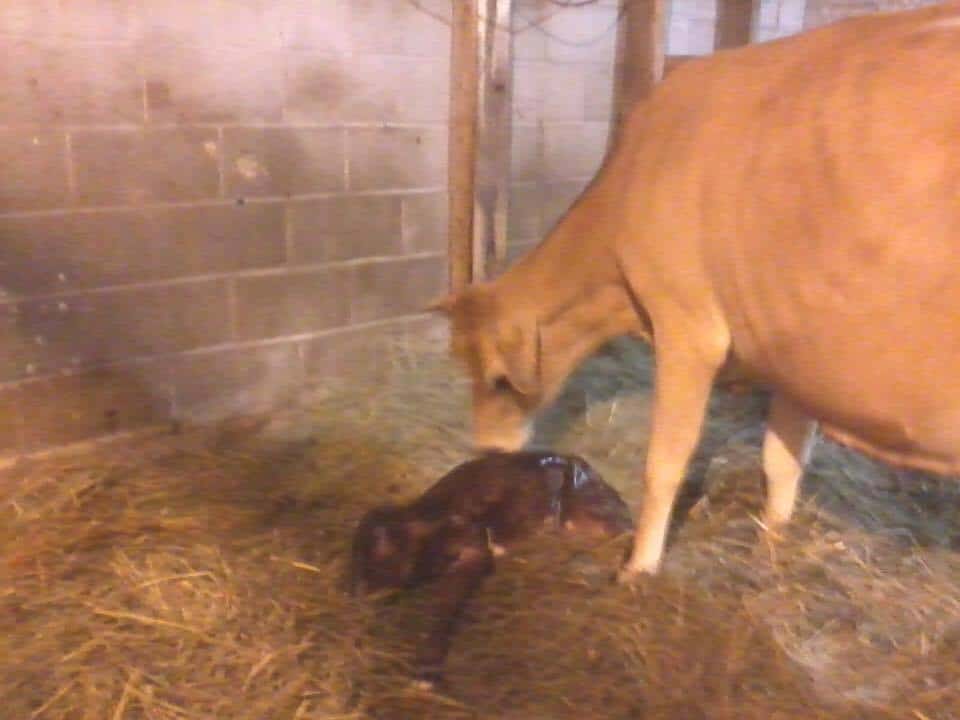
This little heifer was Juneberry. It was like a scene from a movie. There to see the birth was just me and the farm dog Argo, quietly sitting on a hay bale in the barn, watching a new life begin. I didn’t realize in that moment my life would pretty much be changed forever. It couldn’t be helped, I was in love with those sweet cows.
Quite tragically, Bea died the following spring from Hardware Disease. She was only four. Hardware Disease is when a cow ingests some type of metal or other hardware. It can puncture their stomach and be fatal. Even with several vet visits she couldn’t be saved.
Bea’s sweet legacy lives on however with Juneberry, who is the resident cow at our farm along with her daughter, Beatrix. I got to see her be born too.

Jersey Cow Personality
Jersey cows are known for their gentle disposition, friendliness, and curiosity. So far I have found that to be true, but like with any animals you will have variations in personality.
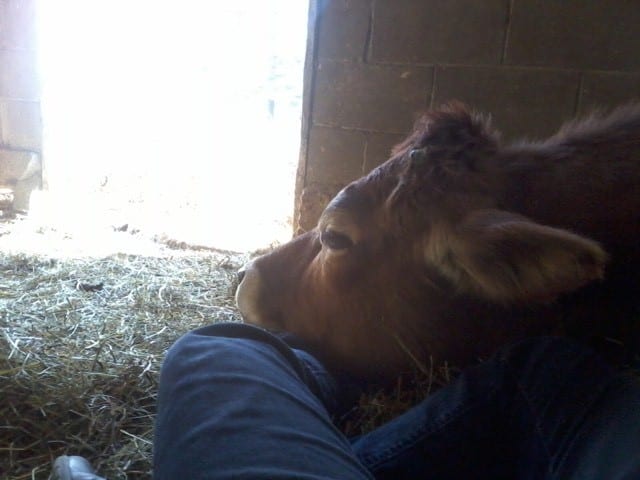
Bea the first, was the most gentle cow I had ever met. Sweetness all the way through. I think she only ever kicked at the milker once, and that was because it was on funky.
Her daughter Juneberry, is a big old sass. She started out sassy and got progressively more so. After she had her first calf she leveled out a little bit, but she still has a lot of attitude. She is smart, comes when I call for her, and after a season of milking was pretty well trained to stand nicely. June adores fresh pasture and comes running as soon as she hears the squeak of the fence reel. She was only ever aggresive once that I saw, and that was when a bunch of neighbor kids were chasing her sheep herdmates. She ran those kids right out of the pasture!

Beatrix, June’s daughter, is more like her grandmother. I think I have seen her trot only a handful of times in her life. She is kind, giving kisses to other animals and always friendly with people. We hope she will freshen this spring and we will get an idea of what kind of milk cow she will be.
Jerseys and Weather
The dairy farm I worked at didn’t have purebred Jerseys, largely because they didn’t feel they do well in cold weather.
I am not a person who keeps solid records of my cow’s milk production, so I can’t say how much cold or heat affects output.
I’ve read that Jerseys do well in hot temperatures. We do get in the high 80s to low 90s in Minnesota, and they seem to manage alright. On the flipside we get down to -40 actual temperature, -64 at times with wind chill (no, I don’t know why we live here).
From what I’ve seen, our girls manage about as well as any other animal in such nasty weather. Plenty of bedding, an area out of the wind, lots of good hay, and they do alright.
June did get frostbite on a teat two winters ago and I’ll always feel guilty about that. We had a long stretch of unbelievably cold weather. I’m talking daytime temperatures of -20 with nights hitting the -60+. I should have been better about putting ointment on her teats.
Still, we managed to milk through it and that teat still produces fine.

How much milk will I get from a Jersey?
That will vary widely depending on the cow, feed, weather, if you are sharing milk with the calf, what stage of her lactation she is in, etc.
Some folks report getting 6 gallons a day from their Jersey. I would think that cow doesn’t still have her calf and is milked twice a day.
For us, we milk once a day in the morning and keep the calf with her mama all day. With that, we would see around 1.5-2 gallons a day at peak. Then she’d typically settle into a little over a gallon for the rest of her lactation. PLENTY for a family and then some.
Jersey Calves
Jersey calves tend to be small and unbelievably adorable. Some folks say they are more delicate than other breeds, which might be true. We always plan to calf in the spring so we aren’t dealing with little wet calves in the dead of winter.
It is said that Jersey cows having a higher chance of getting Milk Fever, which can happen after they have their calf and their calcium levels plummet. A good diet, and some precautionary supplements on hand for after calving (and of course your vet’s number) should leave you okay in that regard.
Jersey bulls are known to be some of the more aggressive bulls out there, so chances are you will need to go the Artificial Insemination route. If there are some dairies in your area, ask around to see who their AI person is, or if they do it themselves they might be willing to come over and AI a single cow for a small fee.
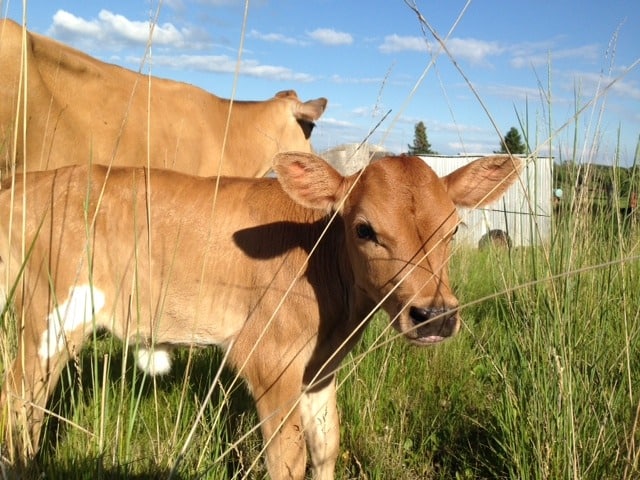
Jersey Cow Resources
The bible for homestead cows and Jersey cows is Keeping A Family Cow. The author is easy to understand and has decades of experience with Jerseys. There is also a great message board of the same name.
I love my Jersey girls and am happy to answer any questions folks have! Feel free to comment below.
Want more cow content? Click here!
Watch and Learn
Pin it for Later




